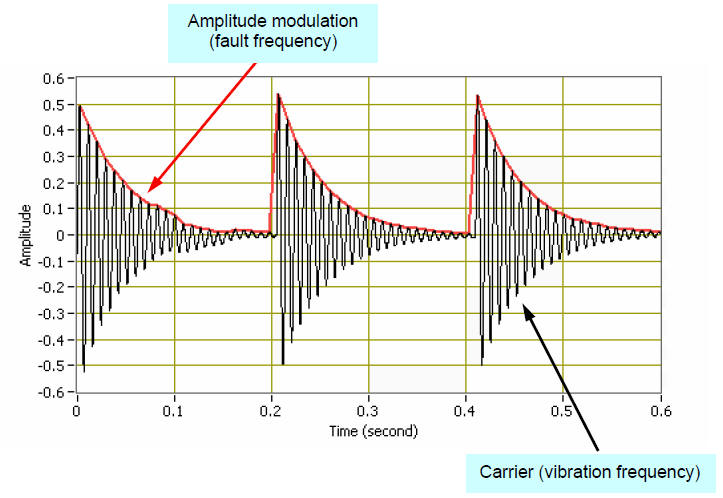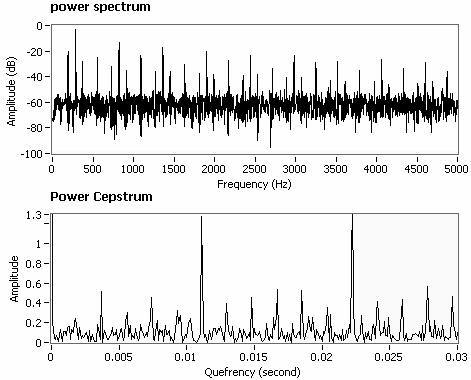Rotating Machinery Fault Diagnosis Techniques -Envelope and Cepstrum Analyses
Zhuang Li & Suri GaneriwalaSpectraQuest Inc., 8227 Hermitage Road, Richmond, VA 23228
Published: October, 01 2006
Abstract
This tech note focuses on two techniques associated with rotating machinery fault diagnosis: envelope and cepstrum analyses. Rotating machinery faults usually cause strong harmonics and sidebands. Both the envelope and cepstrum analyses are useful tools to identify the fault frequencies and distinguish them from other frequency contents. Examples of bearing faults, broken rotor bar, and gearbox faults have been presented to demonstrate how to use the software package and how to interpret results. All the experimental data were acquired from Spectra Quest's Machinery Faults Simulator.
Introduction
This tech note focuses on two techniques associated with rotating machinery fault diagnosis: envelope and cepstrum analyses. Rotating machinery faults usually cause strong harmonics and sidebands. Both the envelope and cepstrum analyses are useful tools to identify the fault frequencies and distinguish them from other frequency contents. Examples of bearing faults, broken rotor bar, and gearbox faults have been presented to demonstrate how to use the software package and how to interpret results. All the experimental data were acquired from Spectra Quest's Machinery Faults Simulator.
Rotating machinery faults usually associate with strong harmonics and sidebands. Therefore, the fault frequencies can be distinguished from the other frequency contents by identifying the harmonics or sideband components. Envelope analysis is a useful tool to extract the sidebands caused by amplitude modulation, while cepstrum analysis is to separate harmonic families.
In this tech note, the fundamentals of envelope and cepstrum analyses are briefly introduced with examples of rolling element, broken rotor bar, and gearbox faults. The physics associated with the faults are also discussed. The readers do not need to worry about the theories behind the algorithms.
For rolling element bearings, when the rolling elements strike a local fault on the inner or outer race, or a fault on a rolling element strikes the inner or outer race, an impact is produced. The bearing frequencies can be categorized as BPFO (ball passing frequency outer race), BPFI (ball passing frequency inner race), BFF (ball fault frequency), and FTF (fundamental train frequency). Please see the last page of this tech note for the calculation of these fault frequencies. Like rolling element bearings, a faulted gear tooth also generates impact once per revolution when meshing with the other gear.
The impacts generated by gearbox and rolling element faults superimpose upon the vibration signal, resulting in amplitude modulation as shown in Fig. 1, and thus cause sidebands in the spectrum around the frequency bins associated with the vibration signal. The sidebands mingle with the frequency components of the vibration signal so that it is hard to distinguish them in the spectrum. Impacts in time domain generate many harmonics extending to very high frequency in frequency domain. Often some of these harmonics excite resonance in structure, bearings or sensors. Exact location of the resonance is usually not known and cannot be determine easily. However, the resonance amplifies the modulating and carrier signals. Envelope analysis when applied in this region is a useful tool for amplitude demodulation. It should be noted that it is not easy to relate the amplitude of the signal to the fault severity. Envelope analysis is a useful tool for amplitude demodulation. The envelope analysis function in VibraQuest is based on an improved Hilbert transform method. This improved demodulation method attenuates the influences from high frequency contents and makes the envelope frequency easier to identify.
Figure 1 illustrates a simulated amplitude modulated sinusoidal signal. The vibration signal is called the carrier. The red curve indicates the envelope which is directly caused by the impacts mentioned above. The envelope analysis is to extract the frequency of the envelope so that the faults caused by rolling element bearing or gearbox can be identified.

Fig 1: Vibration and fault frequencies caused by amplitude modulation

Fig 2. power spectrum, and power cepstrum of a typical gearbox signal containing two harmonic families





